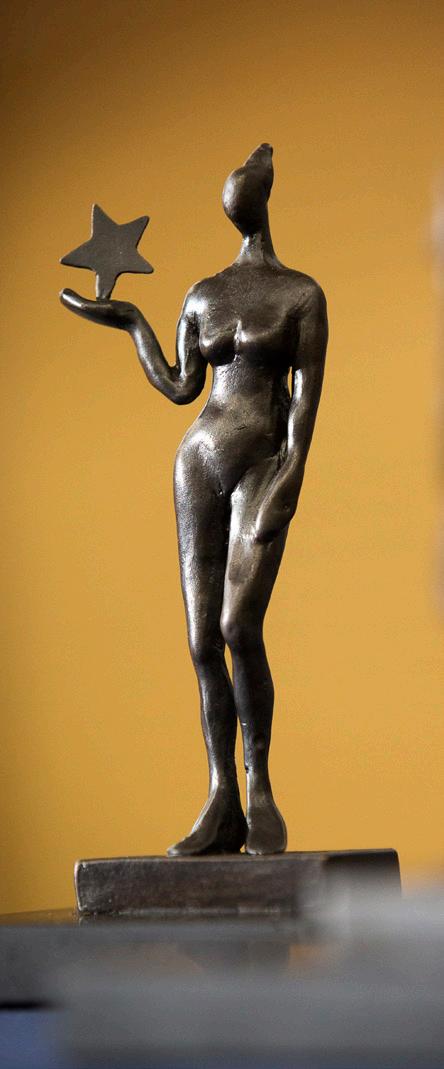
4 minute read
START-OF-YEAR DISRUPTION... AGAIN
On Friday 27 January, the Auckland region was hit hard by torrential rain and flash flooding just as the anniversary long weekend was getting underway.
Much of the city was impacted, with more than 280mm of rain falling in under 24 hours. Twenty-five suburbs were affected, some motorways were closed and thousands of homes were assessed for damage.
Then, on the morning of Wednesday 1 February, we were hit with a second storm. NIWA has described it as a onein-200-year event for the Auckland and Coromandel regions.
As the series of storms coincided with the start of the school year, and many schools were flooded, the Ministry recommended schools not open until 7 February and Diocesan complied with this directive while our students and teachers switched to online learning.
Dio Campus
At the peak of the storm, civil engineers measured that 4,000 litres of water a minute was pouring into the grounds from neighbouring areas. The floodwaters inundated the grounds and entered multiple buildings, but generally the campus held up well.
The water flow from Margot St and surrounding areas caused significant water damage on the western side of the campus. The Uniform Shop, underground carpark, Aquatic Centre and our Archive were all impacted.
The carpark was where the most water collected, reaching a metre deep at its peak and the blue tennis courts were flooded with water 20cm above the playing surface.
Elsewhere on our campus, the basement of Centennial Building, the Junior School Hall and our Professional Centre were all flooded. Most of the damage was caused by ground water (black water) which meant the clean-up process became more complicated.
We were, however, very fortunate that most of the teaching spaces were unaffected, and we were able to begin classes without a hitch, albeit a week late.
THE CLEAN-UP PROCESS WAS A LEARNING CURVE
The first clean-up process happened over the Auckland Anniversary long weekend.
There was much work to be done and we were extremely lucky to have contractors respond immediately to help us with cleaning debris from our drains, draining flooded areas, sanitising artificial turfs, sucking water from flooring, sanitising carpets and checking all electrical equipment for safety.
Unfortunately, the second storm reflooded many of the same areas and we were back to square one. Again, a massive clean-up began, led by our properties team, and involving many staff and community volunteers with a ‘bring your own broom’ working bee at the School. After a lot of hard work, by 7 February the campus was ready for staff and students. Due to the floods we had to relocate some facilities, the Professional Centre, Uniform Shop and Archive, to other parts of the School. This displaced around 25 staff for the majority of Term 1 while their work areas were gutted and remodelled.
Melissa Brady, our property manager, explains: "In flooded areas we were extremely busy ripping up wet carpet and isolating power, and the Council instructed that the walls were also to be ripped out up to 800mm high if they had been contaminated by ground water. All carpets and furniture items that were touched by the black water were disposed of appropriately and framing was left exposed to dry out with fans and dehumidifiers.
“As the School is a live environment, the team worked long hours, with many constraints, but 90% of the remediation work was completed by the end of Term 1.”
An Eye On Sustainability
From an environmental perspective, it has been heart wrenching to see so much carpet, Gib Board and equipment needing to be sent to skips and ultimately landfill. During this process we worked with Green Gorilla – an organisation known for its sustainable practices and sponsor of the Green Star rating system. They worked relentlessly to go through our skip waste and more accurately assess what needed to go to landfill to help us minimise the impact on the environment.
What We Learnt Along The Way
We were relatively fortunate compared to some other Auckland schools, homes and businesses. While our campus was significantly flooded and has incurred a large insurance cost to remediate, the School was operational by 7 February and our students only needed to work remotely for a few days. We appreciate that not all schools were so fortunate.



• Understanding ground water flow and planning for any future events
We have engaged with the council and civil engineers to look at addressing the water coming into the School from council roads and other areas. We have also met with Dilworth to discuss drainage and stormwater flow from their campus.
• Current changes to our campus
We are working with engineers to remodel the landscape to protect certain areas from future flooding events and create overland flow paths to channel water into run-off areas and water gardens, in much the same way that sand bags operate, but on a permanent basis.
• Current changes inside our buildings
To lessen the extent of any future flood remediation, we have opted for polished concrete floors and mats as opposed to carpets in floodprone areas. We have also invested in furniture that will be less impacted by water damage, such as desks and storage units that have metal legs. Furthermore, we have raised electrical equipment off the floor in case of future flooding.
Resilience In Changing Times
Similar to our COVID experience, we found that our students, teachers and community were highly resilient during this unprecedented event, and during the short time we needed to move to remote learning, our students and teachers quickly pivoted.
We are grateful to our property team who have worked relentlessly to get the campus back into shape, and everyone for their patience as we remediated damage. We were also very fortunate that nothing ‘irreplaceable’ like our historical Dio archive records were lost in this flood. Our thoughts are with those who were less fortunate.
Melissa Brady, Property Manager










